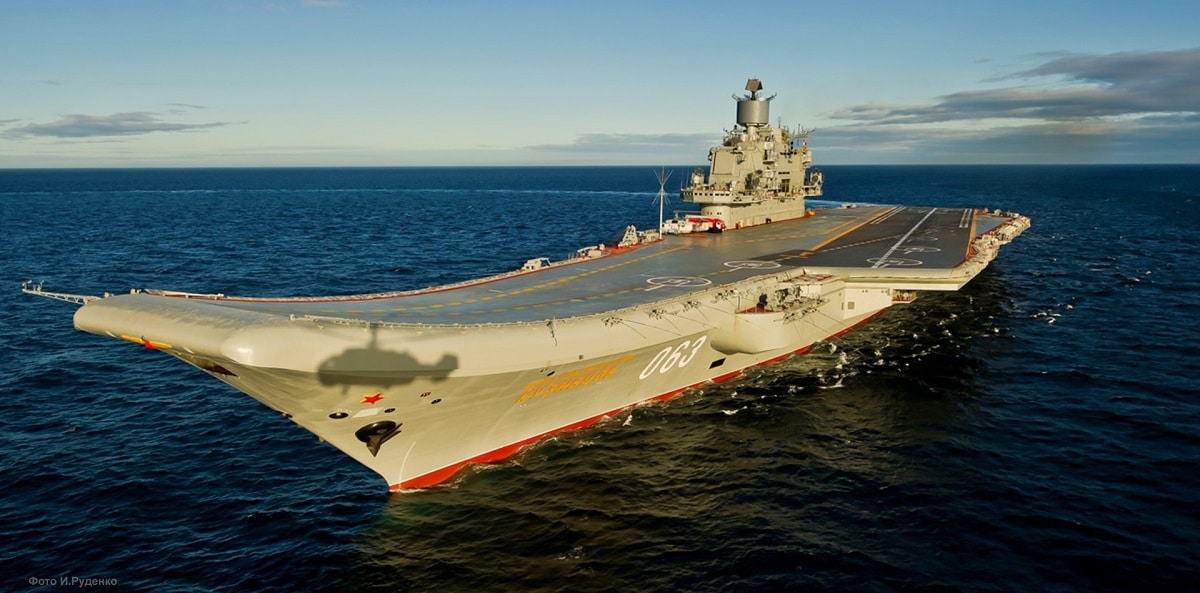Remember, the
Admiral Kutznetzov isn't even the best of Russia's warships. It may be an aircraft carrier but it still burns a lot of coal. It's very long journey from the Arctic to Korea (which is the closest route; much closer than sailing pass the GIUK Gap-the Straits of Gibraltar-Suez-Indian Ocean-Straits of Malacca-South China Sea-Taiwan Strait-Yellow Sea).
This is how its interior looks like:
No need to send the aging on a long ardoulous journey when there are surface warships in Vladivostok that could to the same job.
On the diplomatic front, it might warm some relations with the U.S. since this is a humanitarian operation. Maybe we could have the Russian Navy cooperate with the U.S. Navy, PLAN, JMSDF, and other allied navies in the evacuation of foreign personnel from the peninsula.
I admit, I also wanted to put Russia's aircraft carrier as part of the story, but it is homeported in Murmansk instead of Vladivostok.
Okay, so after what I found out I decided to rewrite the article. Thanks
@Gillan1220 for pointing this out to me.
3 Sep, 2016, 16:20 / Home / World News
Aircraft Carrier Admiral Kuznetsov to be deployed to the Korean Peninsula Naval Quarantine
Decision comes following North Korea's plans to use Infected specimens as biological weapons to start outbreaks within Japan and what remains of South Korea
The Admiral Kuznetsov Aircraft Carrier, seen in this photo, is awaiting orders from the Ministry of Defence to be deployed from Murmansk for the fortified city of Busan following the devestating K-Z Virus outbreak and North Korea planning to use Infected specimens as biological weapons to start outbreaks within Japan and what remains of South Korea.
In a move that is somewhat surprising, the Ministry of Defence of the Russian Federation earlier today has announced that they're in talks on considering deploying the
Admiral Kuznetsov, the flagship aircraft carrier of the Russian Navy from Murmansk, into the ongoing Naval Quarantine of the Korean Peninsula following the devestating outbreak of the K-Z Virus on July 20, 2016 and due to North Korea planning to use Infected specimens as biological weapons to start outbreaks within Japan and what remains of South Korea.
The aircraft carrier is due to set sail on 15 October 2016 from Severomorsk for the Mediterranean, accompanied by seven other vessels of the Russian Navy including the nuclear-powered battlecruiser
Pyotr Velikiy and two Udaloy-class destroyers. But due to the current events in the Korean Peninsula, it was ordered by the Commander-in-Chief of the Russian Navy, Admiral Vladimir Korolyov, to stand-by for a deployment into Busan, now a fortified safe-zone and the temporary capital as Seoul was overun by the infected, where it will evacuate all the Russian citizens and provide medical aid and relief to the many South Koreans that are struggling due to the crisis and join the ongoing naval quarantine. The ship and crew is currently awaiting orders at Murmansk as officials from the Ministry of Defence are currently in talks on the aircraft carrier's deployment.
The design of
Admiral Kuznetsov class implies a mission different from that of the United States Navy's carriers. The term used by its builders to describe the Russian ships is Tyazholyy Avianesushchiy Kreyser (TAVKR) – "heavy aircraft-carrying cruiser" – intended to support and defend strategic missile-carrying submarines, surface ships, and naval missile-carrying aircraft of the Russian Navy.
Admiral Kuznetsov's main fixed-wing aircraft is the multi-role Sukhoi Su-33. It can perform air superiority, fleet defence, and air support missions and can also be used for direct fire support of amphibious assault, reconnaissance and placement of naval mines. The carrier also carries the Kamov Ka-27 and Kamov Ka-27S helicopters for anti-submarine warfare, search and rescue, and small transport which will be suitable for air-dropping relief supplies and medications to the infected areas.
For take-off of fixed-wing aircraft,
Admiral Kuznetsov has a ski-jump at the end of its bow. When taking off, aircraft accelerate toward and up the ski-jump using their afterburners. This results in the aircraft leaving the deck at a higher angle and elevation than on an aircraft carrier with a flat deck and catapults. The ski-jump take-off is less demanding on the pilot's body, since the acceleration is lower, but results in a clearance speed of only 120–140 km/h (75–87 mph) requiring an aircraft design which will not stall at those speeds. The "cruiser" role is facilitated by
Admiral Kuznetsov's complement of 12 long-range surface-to-surface anti-ship P-700 Granit (NATO reporting name: Shipwreck) cruise missiles, resulting in the ship's Russian type designator of "heavy aircraft-carrying missile cruiser" that will be used in the event of a missile attack or infected specimen from North Korea if the aircraft carrier is deployed.
Unlike most western naval ships that use gas turbines or nuclear power,
Admiral Kuznetsov is a conventionally powered ship that uses mazut as a fuel, often leading to a visible trail of heavy black smoke that can be seen at a great distance. Russian naval officials have said that the failure to properly preheat the heavy mazut fuel prior to entering the combustion chamber may contribute to the heavy smoke trail associated with the ship. The Minister of Defence, General Sergei Kuzhugetovich Shoigu, said that if the decision is made, not only will the ship be carring relief supplies but it will also carry officers and vehicles from the Ministry of Emergency Situations (EMERCOM) that will be accompanied by soldiers from the Russian Ground Forces and the Russian Air Force under the command of Colonel Valentin Lebedev who is currently stationed onboard the
Marshal Shaposhnikov which is also involved in the Naval Quarantine of the Korean Peninsula . They will be assigned in rescuing many of the South Koreans that are trapped in the infected zones and they had been trained on what to do if they came across someone that is infected with the K-Z Virus. This is likely the fact that Defence Minister Sergei Kuzhugetovich was the former Minister of Emergency Situations from 1994 to 2012.
However, officers from EMERCOM were already in Busan and in Jeju Island assisting in the relief efforts while co-ordinating with doctors from the Russian Armed Forces led by Colonel Valentin Lebedev who in an interview from Busan on why he is chosen for this operation said, "I have been informed about what happened in South Korea and the nature of this virus, the reason they chose me to lead this operation is because we may fear that the virus could infect nearby Vladivostok which will later spread to all of Russia." He spoke in a skype interview onboard the
Marshal Shaposhnikov. "I was also informed that apparently North Korea was somehow using infected specimens as biological weapons and I fear that the worst will come despite our Ground Forces troops stationed at the Russo-Korean border near Vladivostok being on high alert since July 20th, we are closely monitoring the situation as of now." Colonel Leberdev also said that the Navy has been working closely with the US Navy, the Japanese Maritime Self Defense Forces, the People's Liberation Army Navy and all the allied navies in the evacuation of not only Russian citizens but all foreign nationals in South Korea despite the tensions with the United States but because this is a humanitarian operation, he hopes that this will somehow ease the tensions a bit following the downing of Malaysia Airlines flight MH17 in 2014.
President Vladimir Putin has phoned South Korean President Park-Geun Hye from the Kremlin in Moscow to Busan, in which he offered his condolences and said that his administration and government will do what they can to help. "This devestating outbreak from South Korea is not only threatning the entire Russian Federation, but also the entire world." He spoke in a televised address to the nation just a day after the outbreak. "I ask for all citizens of Russia to pray to the many South Koreans struggling during this outbreak and I ask for your condolences and prayers to them as we are watching what is happening as of right now."


